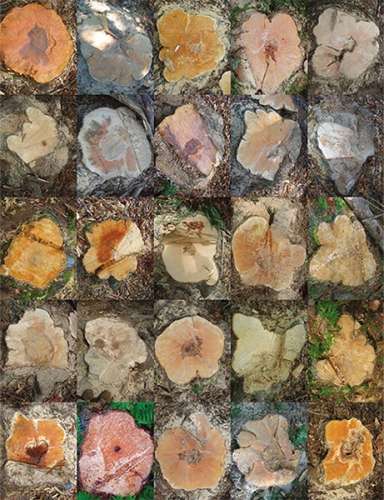
The wood of sugar maple trees is highly valued for its even grain and creamy light color, making it one of the Northeast’s most commercially important hardwood species for use in furniture, flooring, and other products. But the heartwood in the center of sugar maples often has a dark discoloration that is considered a defect by the forest products industry and can reduce the value of the wood by as much as 10 times. Because it is difficult to determine whether an uncut tree will have a dark heart just by looking at it, a professor at the SUNY College of Environmental Science and Forestry examined what visible factors might be used to predict the size of a dark heart.
“People who are buying or selling sugar maples need to know how valuable it’s going to be, which you don’t know until you cut it down,” said Ruth Yanai, who led a study that became the cover story in the Journal of Forestry in January. “The foresters trying to decide how much a tree is going to be worth have come up with methods for determining whether it’s got a big heart.” But those methods had not been scientifically evaluated.
Yanai and her research partners sampled 265 sugar maple trees graded one or two prior to harvest at 10 sites throughout New York, and then studied their stumps after harvest. They also examined soil and other site characteristics and evaluated the history of land use and natural disturbances at each site. At the site level, the strongest predictor of heart size was soil acidity. Trees at the site with the least acidic soils had the smallest hearts, totaling just 12 percent of the stump diameter. At all sites, trees with what was described as “flaky bark” tended to have larger dark hearts, as flaky bark is a sign of slow growth in sugar maples, and slow growth appears to exacerbate the spread of the discoloration. Lower-grade trees and those growing on steep slopes were also found to have large dark hearts. Contrary to previous studies, which found proportionately smaller hearts in larger trees, no pattern was found linking tree diameter to heart size.
“Our results suggest that forest managers should not prematurely harvest their sugar maple crop trees for fear of increasing percentage of dark heart with age,” concluded the study’s authors.

